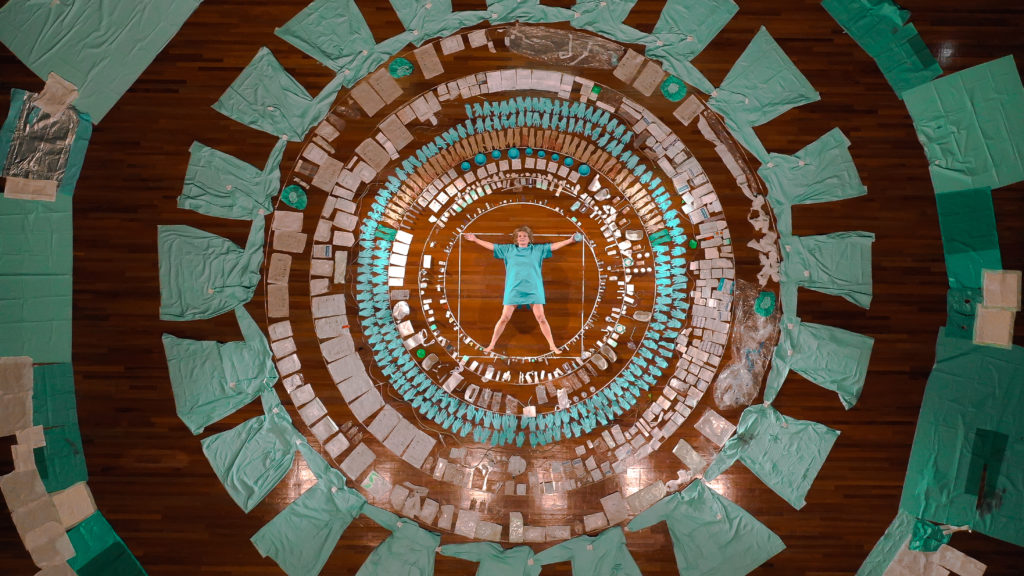Health Waste
Maria Koijck
12 Responsible consumption, 3 Health and wellbeing, Photography, Visual
This is the waste of one operation, my operation
“In the photo, you can see me, Maria Koijck, lying among the waste from one operation, my operation.
“In 2019 I was diagnosed with breast cancer and had to undergo a full mastectomy for this. At the end of 2020, I received a new breast made of body material. The operation took 10 hours. I am overjoyed!
“During the process of my illness and in the run-up to this operation, I discovered that 60% of all surgical equipment is disposable. For example, stainless steel scissors are flown in from Japan and after a single cut they end up in the trash can.
“To get an idea of the total amount of waste produced by my operation, I asked the medical team to collect all the waste from my operation. You can see the result here….
“I am more than happy to have had the chance to heal but I am also shocked by six garbage bags full of waste for one operation, my operation. As an artist, I have been putting waste at the center of my work for years. It begs the question for me: People want to get better, but at what cost?”

“If we continue to produce waste like this, Mother Earth will eventually consist of plastic instead of fertile soil.”
About Maria Koijck
Maria Koijck (1965) studied at Academy Minerva and trained to be a plumber (GaWaLo) in Groningen. She then completed an Inservice training as a nurse in Delfzijl and worked at the Martini Hospital in Groningen. In 1997 she started Bas-is Atelier, a company for design and production. She provides events and performances with decorations and sets.
In 2008, she visited a friend in Sierra Leone where she first saw huge amounts of trash on the beaches of Freetown. The whole beach was covered with a one-meter thick layer of plastic. From that moment on she decided to devote her art to the then relatively unknown global problem: plastic soup. Her first community art project was Petty de Zwaan in 2009. Together with residents from her neighborhood, she collected 15,000 bottles in 2 months. Those bottles served as filling and buoyancy for a steel frame in the shape of a swan (5 x 3 m), which floated on the Hoornsemeer in Groningen for 2 months and was eventually taken to the environmental service for recycling, under loud protest from the residents. The swan has been the start of dozens of community art projects involving waste at home and abroad.
